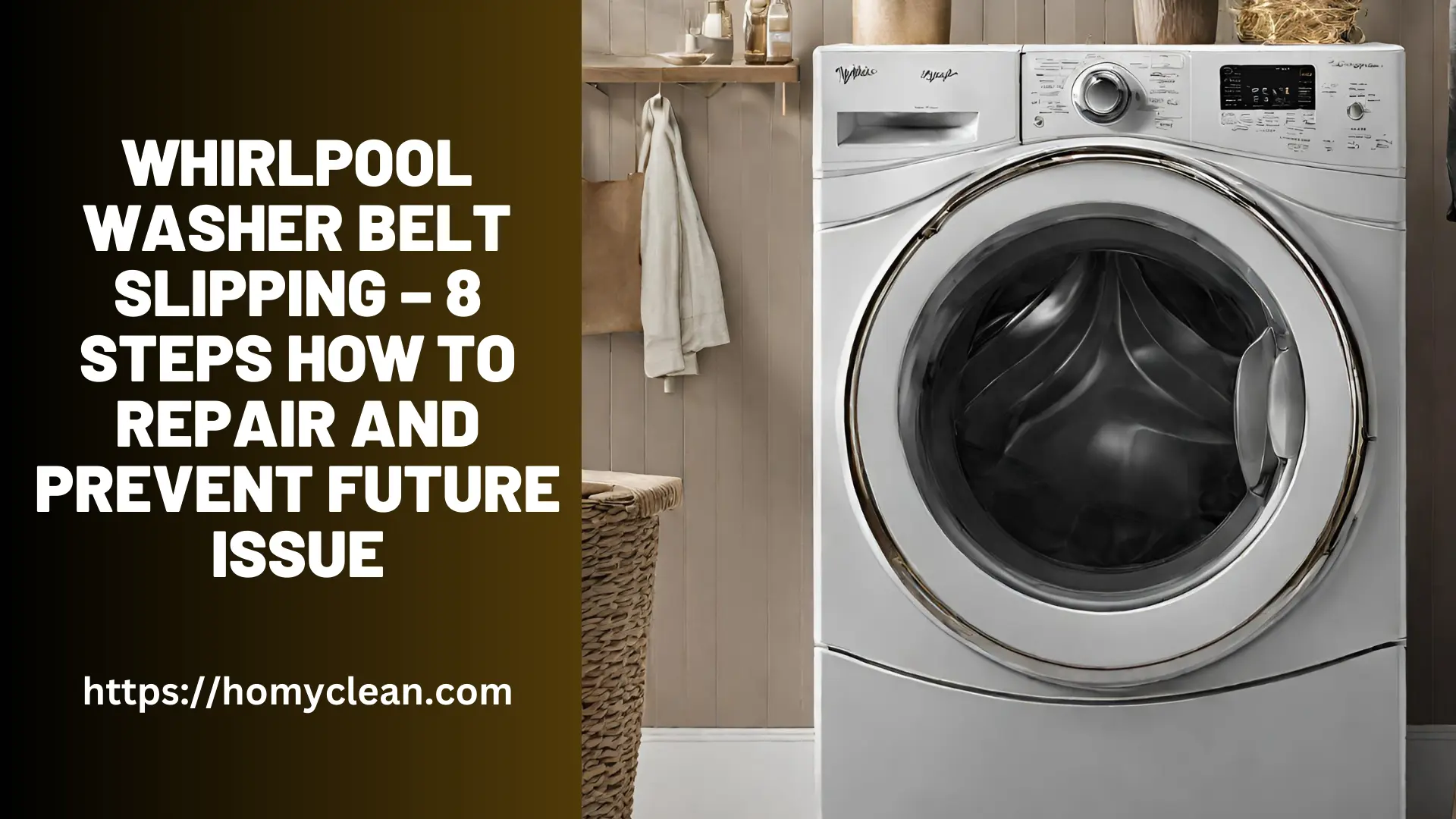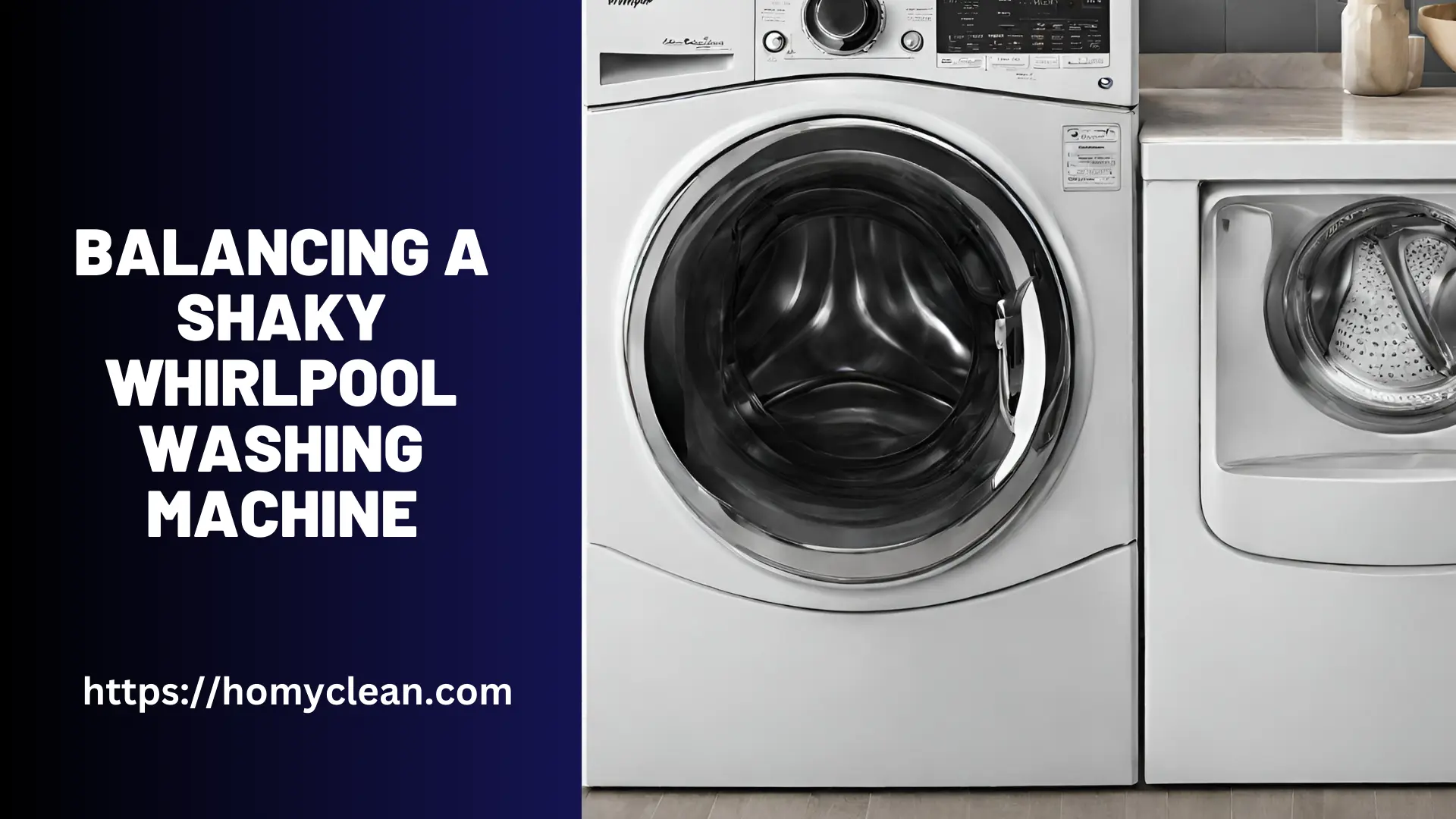When you rely on your washing machine to keep your clothes clean, it can be incredibly frustrating when something goes wrong. One common issue that many Whirlpool washer owners face is a slipping belt. If you’ve found yourself in this situation, don’t worry, we’re here to help you troubleshoot and repair the problem. In this comprehensive guide, we’ll walk you through the steps to fix your Whirlpool washer belt slipping issue. Let’s dive right in!
Whirlpool Washer Belt Slipping Problem
Before we jump into the solution, it’s crucial to understand why your Whirlpool washer belt might be slipping. The belt in your washing machine plays a crucial role in driving the drum’s movement during the wash cycle. Over time, wear and tear can cause the belt to lose its grip, leading to slipping issues.
4 Signs of a Slipping Belt
How do you know if your washer’s belt is indeed slipping? Keep an eye out for these common signs:
1. Unusual Noise: If you hear a squealing or screeching sound during the wash cycle, it could be due to a slipping belt.
2. Drum not Spinning: A slipping belt can cause the drum not to spin properly or not spin at all.
3. Clothes Not Getting Clean: When the drum doesn’t spin correctly, it can cause your clothes not being adequately agitated and cleaned.
4. Burnt Rubber Smell: If you detect a burnt rubber odor, it’s a clear indicator that the belt is slipping.
How to Repair a Whirlpool Washer Belt Slipping Issue
Now that you’ve identified the problem let’s move on to fixing it. You’ll need some basic tools, including a socket wrench, pliers, and a new belt, which you can purchase from a hardware store or online. Here’s a step-by-step guide:
Step 1: Safety First
Before you start, unplug your washer from the power source and turn off the water supply to ensure your safety.
Step 2: Access the Belt
To access the belt, you’ll need to remove the back or front panel of your washing machine, depending on the model. Consult your user manual for guidance.
Step 3: Loosen the Motor
Use a socket wrench to loosen the motor’s mounting bolts, allowing the motor to move freely.
Step 4: Remove the Old Belt
Carefully remove the old, slipping belt from the motor and drum pulleys. Note its routing for reference when installing the new belt.
Step 5: Install the New Belt
Slide the new belt over the motor pulley and onto the drum pulley, following the routing you observed from the old belt.
Step 6: Tension the Belt
With the belt in place, carefully tense the motor by adjusting its position, ensuring the belt is snug but not overly tight.
Step 7: Secure the Motor
Active 2: Tighten the motor’s mounting bolts after appropriately tensioning the belt.
Step 8: Test the Washer
Plug your washer back in, turn on the water supply, and run a test cycle to ensure the belt is no longer slipping.
Preventing Future Belt Slippage
To prevent future issues with your Whirlpool washer’s belt, consider these proactive measures:
1. Regular Maintenance: Inspect your washer’s belt for signs of wear and tear and replace it as needed.
2. Proper Loading: Avoid overloading your washer, as it can strain the belt and lead to slippage.
3. Balanced Loads: Ensure a balanced load distribution in the drum to reduce stress on the belt.
4. Professional Service: If you’re unsure about DIY repairs, consult a professional technician for maintenance and repair services.
People Also Visit:
- How to Replace the Pressure Switch in a Whirlpool Washer
- How to Lubricate the Bearings in a Whirlpool Washer
- Whirlpool Washer Drum Not Spin
Real-Life Example
Imagine coming home after a long day, looking forward to clean laundry, only to find that your washer isn’t working correctly. This was the case for Sarah, a busy working mom. Her Whirlpool washer started making an unsettling screeching noise during the spin cycle. Frustrated but determined, Sarah decided to tackle the issue herself. With a little guidance, she successfully replaced the slipping belt, and her washer was back in action. Sarah’s story is a testament to the importance of understanding and addressing common appliance problems like a slipping belt.
Wrapping Up
In conclusion, dealing with a Whirlpool washer belt slipping issue can be a manageable DIY task. By following the steps mentioned above, you can repair your washer and get back to enjoying clean, fresh laundry. Regular maintenance and preventative measures will help ensure that you won’t have to deal with this problem frequently. If you ever find yourself in Sarah’s shoes, remember that a slipping belt is a common issue, and with a little knowledge and effort, you can have your washing machine running smoothly in no time.
Don’t let a slipping belt disrupt your laundry routine. Repair it today and keep your Whirlpool washer in top working condition. Your clothes, and your sanity, will thank you for it!



![Troubleshooting a Whirlpool Washer Not Filling with Hot Water – [Solution]](https://homyclean.com/wp-content/uploads/2023/10/Whirlpool-Washer-Not-Filling-with-Hot-Water.webp)

